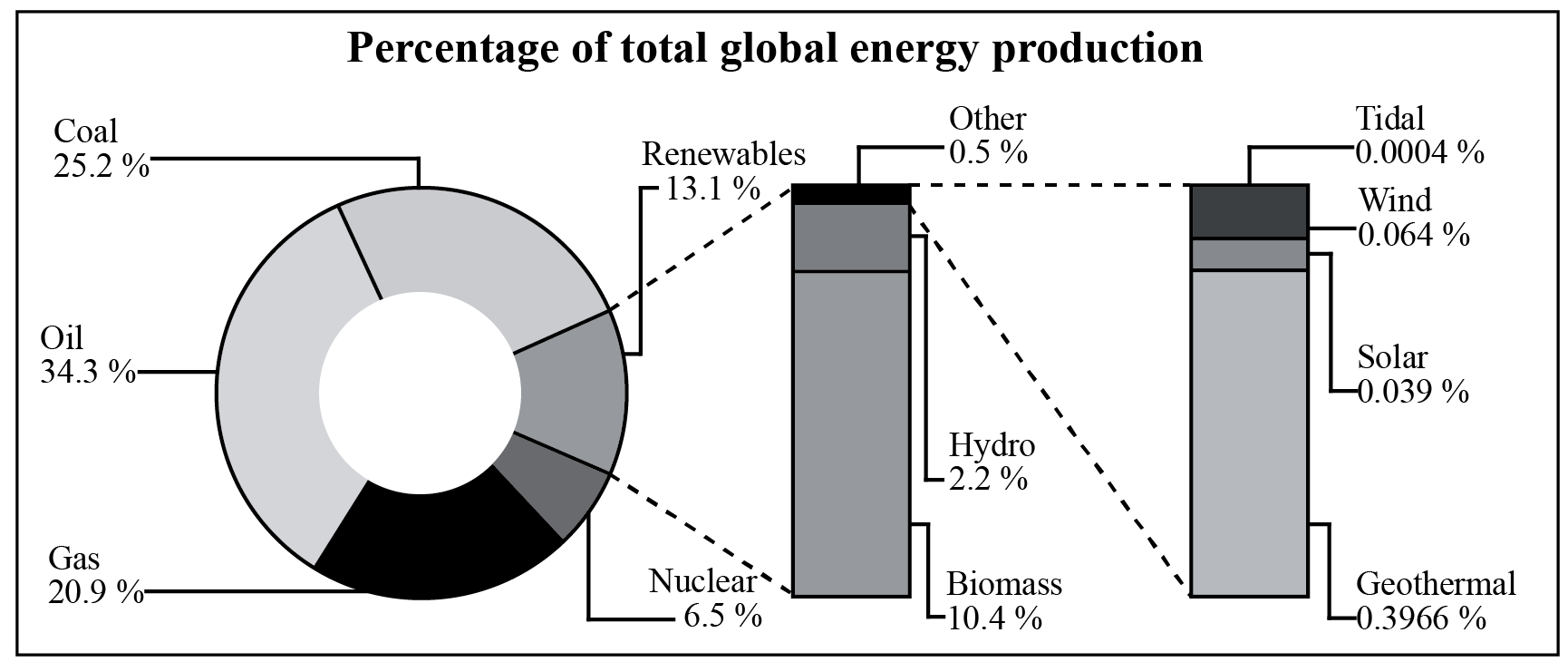| Date | November 2011 | Marks available | 2x2 | Reference code | 11N.1.bp.4 |
| Level | SL and HL | Paper | 1 | Time zone | |
| Command term | Suggest | Question number | 4 | Adapted from | N/A |
Question
The graph shows the different sources of global energy production.

[Source: Sunlit uplands, The Economist May 31 2007, The Economist Newspaper Limited. Reproduced with permission.]
Suggest two reasons why some areas of the world are unlikely to depend entirely on renewable energy sources.
Analyse how the global pattern of oil production has changed in recent decades.
Markscheme
Award 1 mark for each basic reason, with additional 1 mark for extension and/or exemplification.
Answers can suggest reasons with validity at any scale: local, regional or national. Possible reasons include: abundant reserves of fossil fuels; insufficient capital to develop alternative energies; conscious decision to rely on nuclear power; need for portable, emergency sources of power; lack of sufficient opportunities for renewable energy; lack of political will; lack of local conditions for any renewable energy.
Answers may focus on spatial and/or temporal changes.
Answers should refer to sub-global regions in terms of how production is changing over time, and/or how it is changing as a proportion of the world total. Many responses will focus on the "peak oil" scenario. There should be some comment on how demand and price is driving the exploitation of oil in remote and/or previously uneconomic sources, for example, further off shore or tar sands in Alberta, Canada. Award up to 2 marks for valid descriptions of changes, 2 marks for related analysis with the final 1 mark being reserved for either.
Examiners report
Many candidates were able to suggest two reasons why some areas of the world are unlikely to depend entirely on renewable energy sources. The weaker candidates could only manage one basic reason and often failed to back this up with suitable extension and/or exemplification.
Weak candidates had great difficulty trying to analyse how the global pattern of oil production has changed in recent decades. In many cases production was confused with consumption and the changes in global pattern of oil production were not addressed. The best responses demonstrated very accurate and correct ideas with sound knowledge and understanding, for example, details about OPEC and production statistics; relevant descriptions of the global pattern of oil production with strong sound analysis of change (such as geopolitical issues, peak oil scenarios, exploitation/new reserves such as tar sands, conservation/secondary extraction). Unfortunately, these responses were quite rare.

